
FIBA Technologies produces seamless tubes. Doing so requires heating the metal of the tubes and using a CNC-controlled wheel that Sbrogna describes as being like a “pottery wheel.” The wheel gradually shapes the domes for the tube without leaving a weld mark. Photos courtesy of The Robert E. Morris Company.
When part lengths can extend out to 42-feet-long and full production has 19 steps other than machining, ensuring a CNC machine’s ease-of-use is worth a pretty penny. FIBA Technologies, a third-generation, family-owned company that produces custom tubes for gas containment and transportation applications, discovered this when updating its machining capabilities.
For decades, the shop relied on two CNC machines from the 1970s to produce the necks and threads for its tubes, but the machines relied on manual programming for each part, a time-consuming process that required a wealth of experience for smooth operation. Part loading and flipping also proved difficult for these machines due to tube lengths anywhere from seven to 42 feet, with both operations requiring the use of a large crane. These difficulties — the ever-shallower talent pool for people skilled in operating its aging machines and the lengthy machine downtime spurred by waiting for the crane — became bottlenecks for FIBA’s productivity. Amid increasing demand from companies in the space exploration, alternative fuels and electronics industries, the shop decided to invest in an additional machine that could bypass some of these issues. It found a suitable solution in the Soraluce FLP 14000.
Simple Controls
In contrast to the old machines’ controls, which required sophisticated knowledge of G code, the Soraluce machine uses a Heidenhain control. Matt Sbrogna, director of operations at FIBA Technologies, says this type of control is much easier for a new hire to learn. Changing between part programs, he says, is as simple as selecting a pre-written program in the control and pressing start.
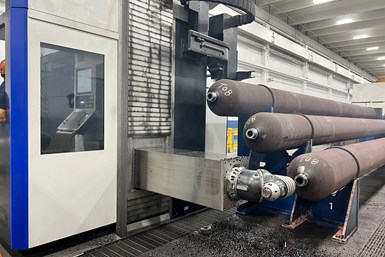
Operating the Soraluce machine requires only a few button presses, rather than fully reprogramming the machine for each new custom tube. The machine can also handle three tubes in one setup, as opposed to the older machines’ two.
Programming itself is also much simpler for the shop, as FIBA’s Soraluce distributor, The Robert E. Morris Company, coded programs for all of FIBA’s tubes during the installation of the machine. Sbrogna says FIBA can now hire a new operator and have them run parts within two to three weeks — a stark contrast from struggling to find people with the necessary experience for the older machines.
Angular Considerations
This simplicity is reflected in how FIBA can now produce some of the features on its tubes, most notably drain holes. These holes are set at a 45-degree angle drilled directly into the dome of the tubes. Drilling these holes was impossible on the older, three-axis CNC machines, instead requiring manual operations using Bridgeport machines.
“We took guys right off the floor and trained them how to use this without any experience,” Sbrogna says.
While the FLP 14000 is also a three-axis machine, FIBA has equipped it with a Soraluce H205 automatic indexing universal head. This head can index on vertical and diagonal axes in 2.5-degree increments to reach the proper angles to produce the drain holes. Unfortunately, it has limitations — FIBA loads three tubes onto the FLP 14000 at once, and while the machine can perform the rest of its machining operations on all three, the machine’s ram would collide with the parts if the shop tried to drill holes into tubes in two of the three positions. As such, tubes in these positions still require the Bridgeport machines for drain holes. Sbrogna says FIBA is still looking to optimize this process, and hopes to use the universal head to perform drilling operations on all three tubes in each cycle in the near future.
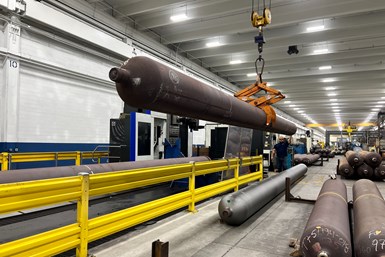
Loading or flipping the tubes requires the use of an overhead crane — but because this crane is so vital in moving tubes around the shop floor, the shop has a backlog on operations requiring it. This contributes to lengthy downtime on FIBA’s older machines. Cutting a crane operation drastically bolsters the Soraluce machines’ productivity.
Cutting a Crane Operation
The FLP 14000 already outperforms the older machines on its travels, however. The Soraluce machine uses a mobile “machine pendant” consisting of the operator station, Y-axis ram, Z-axis column, tool changer and spindle head. This pendant can travel 14,000 mm on the X-axis, while the ram can move 2,200 mm on the Y-axis and the column 1,500 mm on the Z-axis. This is enough to move from one end of a 42-foot tube to the other, cutting out the need for the crane to flip the tubes. As already mentioned, the table is also large enough to fit three tubes simultaneously, whereas the older machines only fit two tubes per cycle.
While the actual cycle times for completing machining operations on the dome are similar between the Soraluce and the older machines, the time savings from eliminating the extra operation are significant. These are further compounded by automatic probing on the Soraluce, which simplifies in-process measurement and ensures the machine pendant and the tube are in the right place when the pendant moves to machine the opposite side of the tubes. Soraluce’s Dynamic Active Stabilizer Plus feature further ensures that performance holds up across this wide range of travels by reducing chatter.

FIBA Technologies uses a Soraluce universal head to perform about 12 different machining operations for every tube, give or take a few based on specific requirements. This includes a saw cut to cut off the tube’s neck, roughing both the OD and ID of the neck, ID threading (sometimes OD threading as well) and occasionally chamfering.
Results
Machining is only one production step of 20 for FIBA’s tubes, a fact which prevents easy comparison of productivity or profitability — especially when the volume and type of tubes on order changes from month to month. But Sbrogna was able to say that the Soraluce machine is more productive than the older machines, and that running them in tandem has enabled the company to meet its goals of 250 tubes produced each month. Repair parts are much easier to come by for this new machine, and hiring manufacturing talent who can work on the new machine is much simpler than hiring for the older machines.
“We took guys right off the floor and trained them how to use this without any experience,” Sbrogna says. “[That’s] probably the biggest benefit of the machine.”
Related Content
Shop Replaces Two Verticals With One Horizontal
By trading two VMCs in to help finance the purchase of a new HMC, this shop was able to significantly increase production and move to lights-out machining.
Read MoreTranslating a Prototyping Mindset to Production
The experimental mindset that benefited BDE Manufacturing Technologies as a prototype job shop has given it an adaptable edge as a production facility.
Read MorePositioned to Prevail: Designing Processes Around People
Stecker Machine Company shows that getting the most value from employees means valuing your employees.
Read MoreVolumetric Accuracy Is Key to Machining James Webb Telescope
To meet the extreme tolerance of the telescope’s beryllium mirrors, the manufacturer had to rely on stable horizontal machining centers with a high degree of consistency volumetric accuracy.
Read MoreRead Next
Soraluce Tech Days Highlights Multitasking, Automation and Productivity
The machine tool builder launched new innovations at an event hosted at its Limburg, Germany, Center of Excellence earlier this month.
Read MoreMorris Group and Soraluce Announce Distribution Agreement
Morris Group Inc. has signed an agreement with Soraluce for exclusive rights to distribute the company’s product line throughout the United States.
Read MoreSoraluce Demonstrates Hardware and Software Advances at Annual Summit
The company continues to refine its large-format machine tools with its dynamic workpiece stabilization capabilities and connected software infrastructure.
Read More



1.JPG;maxWidth=150;quality=70)
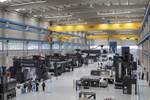



.jpg;maxWidth=300;quality=90)















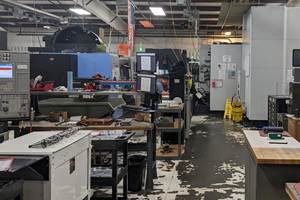
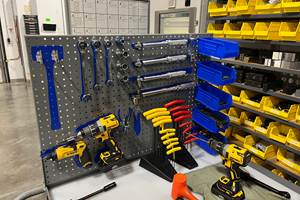


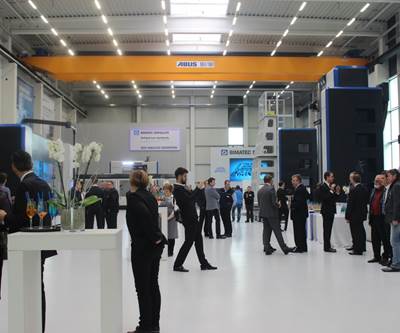
1.JPG;maxWidth=400;quality=70)

.jpg;maxWidth=970;quality=90)